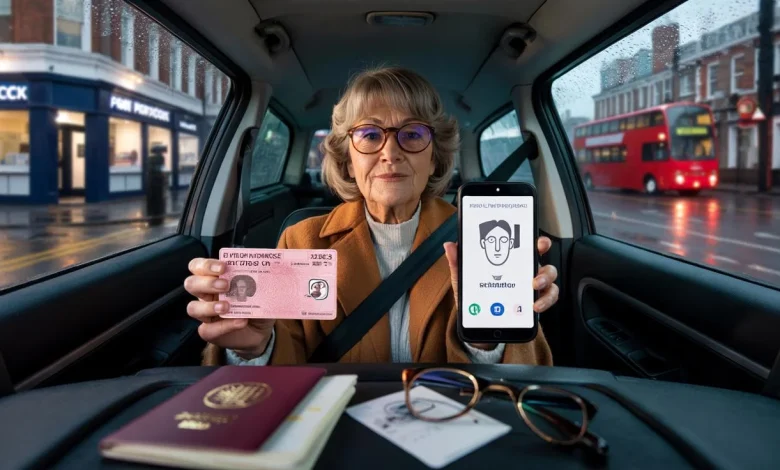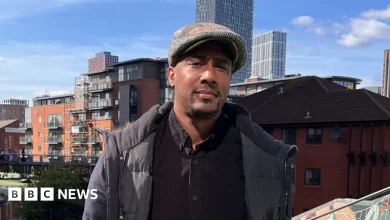Over-62s face new driving licence rules from November 2025 – what to know

A flurry of headlines says drivers over 62 will face new licence rules from November 2025. The reality is more practical than dramatic — and it’s closer to a shift in process than a change in your right to drive. Here’s what that means in real life, and how to be ready without stress.
The queue at the high‑street Post Office hummed with low voices and the smell of wet coats. A man in his early sixties turned a renewal form over in his hands, then glanced at the screen on the self‑service kiosk: “Do it online in minutes.” He frowned, the way we all do when a small admin job grows new teeth.
Outside, the rain eased. He slid on his glasses and checked the tiny date on his photocard. A woman behind him muttered, “Mine ran out last month and I didn’t even notice.” The clerk explained that from next autumn, the DVLA would be nudging older drivers more firmly into digital steps and health prompts.
The small print is changing.
What actually shifts in November 2025
From late 2025, the DVLA is moving towards a digital‑first way of renewing and updating licences. Think clearer online forms, refreshed health questions, faster ID checks, and tighter reminders. For drivers aged 62 and up, that means the journey will start online more often, even if you finish at a Post Office counter.
No new law says you can’t drive at 62. Your entitlement doesn’t vanish before 70. Yet the route you take to keep everything valid is set to feel different — more prompts, more on‑screen guidance, fewer paper detours.
Picture Irene, 63, who hates faff. She opens the renewal page, scans her passport chip with a phone, and the system flags her eye‑correction note from years back. She books a quick sight check at lunch, pops into a branch to capture a compliant photo code, and the application locks in without printing a single form.
Millions of older motorists still prefer the counter. That stays. What changes is the nudge: email and SMS reminders, clearer warnings about overdue photos, and one‑screen explainers of when you must tell the DVLA about a health change. A small shift, but it removes the guesswork that causes fines.
Let’s separate the noise from the nuts and bolts. **Over‑62s do not need to retake their test**. The eyesight rule — reading a number plate at 20 metres, with glasses or contacts if you wear them — stays. Medical self‑declaration remains, with sharper questions and quicker routes to ask your GP for evidence if needed.
Where the line tightens is admin discipline. An expired photocard can trigger a fine of up to **£1,000**. Driving with a notifiable, undeclared condition risks your cover. Expect the November rollout to be the moment when the DVLA’s nudges and cross‑checks get louder, not a cliff‑edge ban.
How to get ready in three simple moves
Do a 10‑minute “licence MOT” this week. Grab your photocard and check three things: the expiry date on the front, your address, and your driving categories on the back. Snap a photo of both sides and save it in your phone’s notes with a calendar reminder 90 days before expiry.
Book an eye test you can actually keep. Two lines, one truth: our vision shifts quietly over time. Put the appointment on the same day as something you already do — the Friday shop, the swim, the grandkid run. If you wear glasses to drive, keep a spare in the car. *It sounds basic; it saves days of hassle.*
We’ve all had that moment when a tiny letter from a government agency gets buried under takeaway menus. **Digital‑first renewals are scheduled to begin rolling out from November 2025**, with extra prompts on health and ID — timelines can shift, so watch for DVLA emails and texts.
“Think of it as a seatbelt for your admin. Quick checks done now prevent long, anxious waits later,” says Mike, a retired instructor who still volunteers on community driving assessments.
- Check the photocard expiry and set a reminder.
- Confirm your address and name match your passport and insurance.
- List any health changes since your last renewal.
- Book an eye test and keep the receipt or report.
- Create or update your GOV.UK account for faster ID checks.
What this means for independence, families and the daily drive
Mobility is freedom, and admin is the toll gate. The 2025 shift isn’t about pushing older drivers off the road; it’s about making the gate automatic, and sometimes a bit stricter. If your photo’s current, your eyesight is checked, and your medical notes are honest, the journey stays smooth.
Soyons honnêtes : personne ne fait vraiment ça tous les jours. So share the load. Adult children can help parents set up reminders, GPs can pre‑empt the paperwork for conditions they already manage, and friends can car‑pool for eye tests. A little planning beats a last‑minute scramble when a trip matters most.
What lingers is the quieter question: how do we keep confidence behind the wheel as years add up? Some drivers take a voluntary refresher session, others trim nighttime miles or stick to routes that feel safe. The licence rules evolve; the human judgment in the driver’s seat matters just as much.
Key points
Details
Interest for reader
Digital‑first process
Online renewals, sharper health prompts, faster ID checks, from Nov 2025 (subject to final DVLA rollout)
Know what changes on your screen and what stays optional at the counter
No new age test at 62
Your entitlement runs to 70; then renew every 3 years with health self‑declaration
Cuts through the rumour mill about retaking a test
Avoid easy fines
Photocard expiry and undeclared conditions can mean up to £1,000 fines and invalid cover
Simple checks now prevent expensive mistakes
FAQ :
- Do I need to retake my driving test at 62 in 2025?No. There’s no new age‑based test at 62. Most drivers keep their full entitlement until 70, then renew every three years.
- What exactly happens in November 2025?The DVLA plans a digital‑first renewal experience with updated medical prompts and faster ID verification. Paper and Post Office routes continue. Timelines can move; follow DVLA guidance.
- How much will a renewal cost me?Online photocard renewals are typically £14; in‑branch services can be higher due to photo and handling fees. Drivers over 70 renew a licence free, though paying for a new photo may apply.
- Which medical conditions do I need to tell the DVLA about?Conditions that impact safe driving or eyesight, such as insulin‑treated diabetes, sleep apnoea, epilepsy, stroke, serious heart issues, glaucoma or significant visual field loss. The full A‑to‑Z is on GOV.UK.
- What happens if I ignore the reminders?You risk a fine up to **£1,000**, possible invalid insurance, and the DVLA can revoke your licence until you put things right. It’s quicker and cheaper to update on time.




